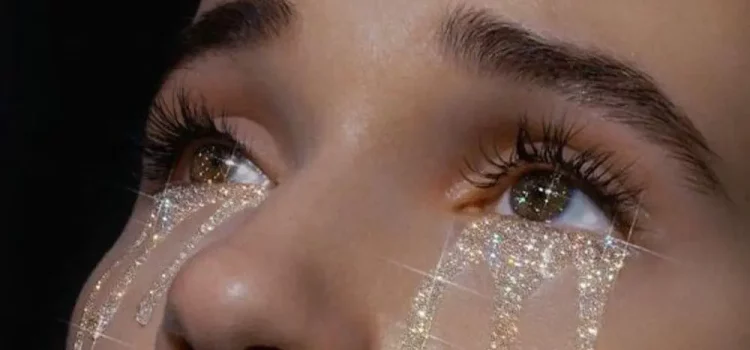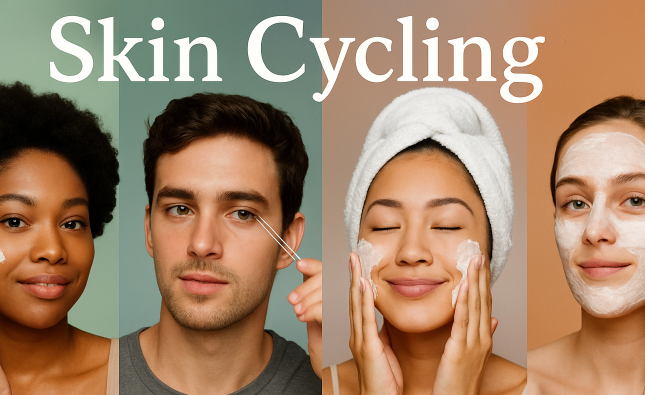
Introduction:
Meet Dr. Ava Shamban, a leading expert in dermatology and skincare science, known for her pioneering research and dedication to helping individuals achieve healthy, radiant skin. In this article, Dr. Shamban explores the fascinating world of tears and their surprising effects on your skin and overall well-being. You’ll uncover the science behind tears and gain insights into how they can play a vital role in your daily life.
Tears: More Than Emotional Release
Tears are often associated with emotions, but Dr. Shamban reveals that they have a far more complex and impactful role in our lives.
Three Types of Tears: Tears are classified into three categories: basal, reflex, and emotional tears. Each serves a unique purpose.
Basal Tears: These are constantly produced to keep the eye moist and nourished, acting as a protective shield against dust and foreign particles.
Reflex Tears: Triggered by irritants like smoke or dust, reflex tears are your body’s way of flushing out potential threats.
Emotional Tears: These tears are released during strong emotions and have distinctive chemical compositions, contributing to emotional relief.
Key Points:
- Tears come in three types: basal, reflex, and emotional.
- Basal tears keep the eyes moist and protected.
- Reflex tears flush out irritants, while emotional tears offer emotional relief.
-

Image by: https://www.mistiluke.com/post/howcryingcanmakeyouhealthier
Tears and Your Skin: The Hidden Connection
Dr. Shamban explores the lesser-known relationship between tears and your skin health.
While the link between tears and emotions is well-known, their connection to skin health is often overlooked.
Hyaluronic Acid: Tears contain hyaluronic acid, a naturally occurring substance known for its hydrating properties. This acid helps maintain skin moisture and elasticity.
Anti-Microbial Proteins: Tears contain lysozymes, which have anti-microbial properties that can protect the skin from harmful bacteria.
Emotional Impact: Emotional tears can reduce stress, and lower stress levels are associated with healthier skin.
Key Points:
- Tears contain hyaluronic acid for skin hydration.
- Anti-microbial proteins in tears protect the skin.
- Emotional tears can reduce stress and benefit skin health.
Tears and Skin Conditions
Dr. Shamban delves into how tears can impact various skin conditions, from acne to aging.
The components of tears can influence the development and management of several skin conditions.
Acne Management: The anti-microbial properties in tears can help control acne-causing bacteria when tears come into contact with the skin.
Anti-Aging Potential: Hyaluronic acid in tears can contribute to skin hydration, potentially reducing the appearance of fine lines and wrinkles.
Eczema and Dry Skin: Tears may provide temporary relief for dry, itchy skin associated with eczema.
Key Points:
- Tears can influence acne, aging, and eczema.
- Anti-microbial properties in tears can help control acne.
- Hyaluronic acid in tears may reduce the signs of aging.
The Healing Power of Emotional Tears
Dr. Shamban uncovers the science behind how emotional tears can offer healing benefits.
Emotional tears are more than just an expression of feelings; they can have tangible effects on your well-being.
Stress Reduction: Emotional tears contain stress hormones, and their shedding can help reduce stress and promote relaxation.
Mood Improvement: Crying can lead to the release of endorphins, often referred to as “feel-good” hormones.
Better Sleep: The emotional release from crying can lead to improved sleep quality, which is essential for overall health, including skin health.
Key Points:
- Emotional tears can reduce stress and improve mood.
- Crying can lead to the release of endorphins.
- Better sleep quality can result from emotional release.
Harnessing the Benefits of Tears
Dr. Shamban provides practical tips on how to harness the benefits of tears for your skin and overall well-being.
You can actively incorporate tear-related benefits into your daily routine to promote skin health and emotional well-being.
Let It Out: Don’t suppress your emotions; allow yourself to cry when needed for emotional release.
Hydration is Key: Stay hydrated to support the production of basal tears, which keep your eyes and skin moisturized.
Mindful Practices: Engage in mindfulness exercises or meditation to reduce stress, potentially leading to fewer emotional tears.
Healthy Lifestyle: Maintain a balanced diet, regular exercise, and proper sleep to enhance overall well-being, including skin health.
Key Points:
- Allow yourself to cry for emotional release.
- Stay hydrated to support tear production.
- Practice mindfulness and maintain a healthy lifestyle.
Conclusion: Tears as a Gift
In conclusion, Dr. Ava Shamban highlights the incredible and often underestimated effects of tears on your skin and well-being.
Tears are a gift from your body, offering numerous benefits for your skin and overall health. By understanding and embracing the science behind tears, you can enhance your emotional well-being and support your skin in staying healthy and radiant. Remember, tears are a natural and powerful tool that can contribute to your overall quality of life.










